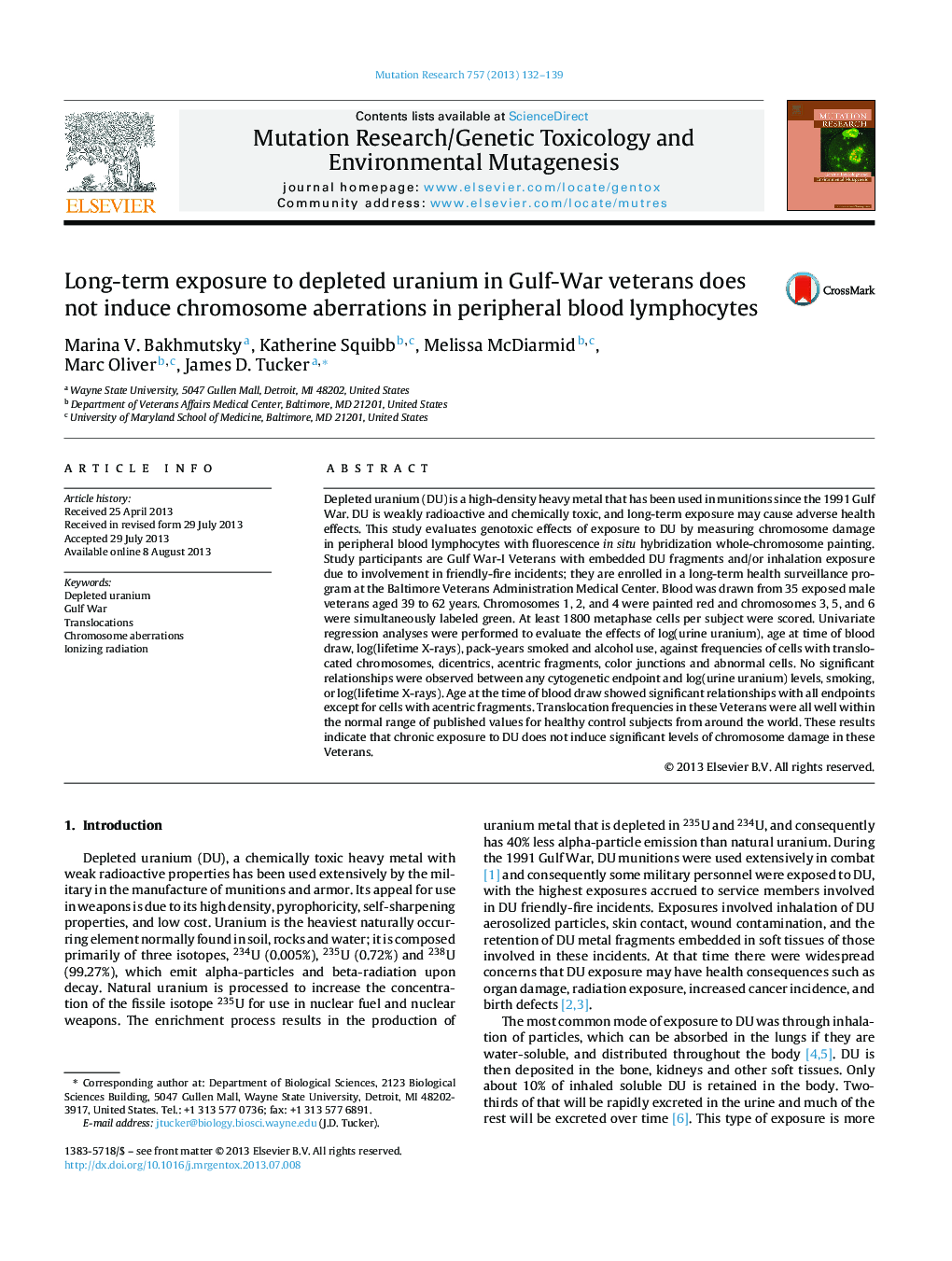| Article ID | Journal | Published Year | Pages | File Type |
|---|---|---|---|---|
| 10914943 | Mutation Research/Genetic Toxicology and Environmental Mutagenesis | 2013 | 8 Pages |
Abstract
Depleted uranium (DU) is a high-density heavy metal that has been used in munitions since the 1991 Gulf War. DU is weakly radioactive and chemically toxic, and long-term exposure may cause adverse health effects. This study evaluates genotoxic effects of exposure to DU by measuring chromosome damage in peripheral blood lymphocytes with fluorescence in situ hybridization whole-chromosome painting. Study participants are Gulf War-I Veterans with embedded DU fragments and/or inhalation exposure due to involvement in friendly-fire incidents; they are enrolled in a long-term health surveillance program at the Baltimore Veterans Administration Medical Center. Blood was drawn from 35 exposed male veterans aged 39 to 62 years. Chromosomes 1, 2, and 4 were painted red and chromosomes 3, 5, and 6 were simultaneously labeled green. At least 1800 metaphase cells per subject were scored. Univariate regression analyses were performed to evaluate the effects of log(urine uranium), age at time of blood draw, log(lifetime X-rays), pack-years smoked and alcohol use, against frequencies of cells with translocated chromosomes, dicentrics, acentric fragments, color junctions and abnormal cells. No significant relationships were observed between any cytogenetic endpoint and log(urine uranium) levels, smoking, or log(lifetime X-rays). Age at the time of blood draw showed significant relationships with all endpoints except for cells with acentric fragments. Translocation frequencies in these Veterans were all well within the normal range of published values for healthy control subjects from around the world. These results indicate that chronic exposure to DU does not induce significant levels of chromosome damage in these Veterans.
Related Topics
Life Sciences
Biochemistry, Genetics and Molecular Biology
Cancer Research
Authors
Marina V. Bakhmutsky, Katherine Squibb, Melissa McDiarmid, Marc Oliver, James D. Tucker,
